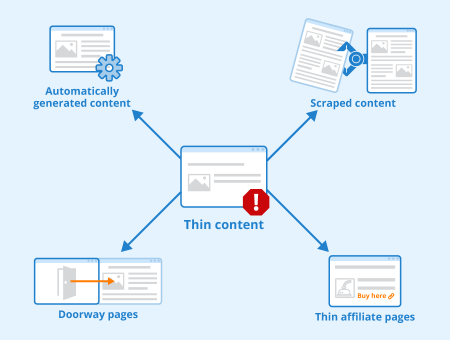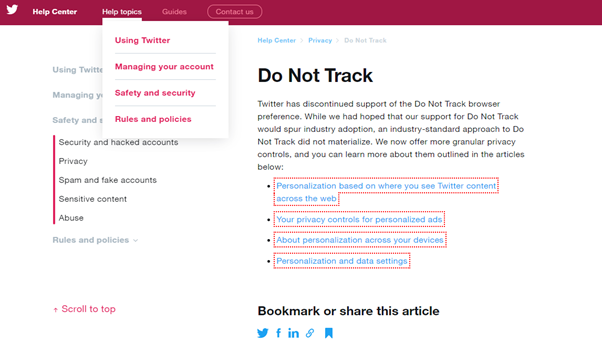Thin Content
Contents
Definition of thin content
Thin content is content that doesn’t provide enough information on a topic to be of significant value to website visitors. Thin content usually refers to blog posts with sparse content but can also be in the form of other webpages, audio, or video.
Thin content usually isn't helpful for website visitors and is therefore bad for the user experience of a website. There are also negative SEO effects that thin content has, as it wastes crawl budget, doesn’t serve a search intent, and can be marked as spam by search engines.
Thin content in the past vs now

Although thin content has clear negative SEO effects today since Google and other search engines generally don't rank it, it could be used in the past to help sites rank for more keywords at a lower cost.
Content farms and scraper sites are a great example of sites that used to get a lot of SEO benefit out of thin content. Sites with a lot of hidden content also used to perform well, since the visible content on pages could be thin and a large number of keywords could still be added.
Although these clear forms of spam have become less effective over time and are currently penalized by search engines like Google, there are a lot of instances where thin content can appear on a site without the site owner being aware of it.
For example, soft 404s, duplicate content pages, and auto-generated pages like checkout pages, are all examples of thin content pages that aren’t created with mal intent. Although not commonly flagged as spam, these forms of thin content pages still waste crawl budget and are bad for SEO.
The difference between thin content and short content
Long-form content has been considered of high importance in content marketing for a long time. However, there’s an important difference between short content and thin content. The main difference is that short content doesn’t necessarily have to be thin, since if a page can serve a user with a short answer, this benefits the user experience.
An example of this are FAQ pages, which often answer many short questions with short answers. If someone wants to know which payment methods a site accepts, or how they can best fix a problem they’re having, short content that solves their problem quickly is preferred over long posts.

An example of a page on Twitter Help Center with short content that serves a clear search intent and is therefore not classed as a thin content page.
SEO implications of thin content
Thin content can cause various SEO issues, including high bounce rates, wasting of crawl budget, index bloat, duplicate content issues, and penalties by search engines. Removing thin content or preventing search engines from crawling/indexing it is an important part of SEO.
In some cases, thin content is necessary for the functioning of a site. Pages like thank you pages, doorway pages, and checkout pages are good examples of this. Search engines are generally prevented from crawling or indexing these pages as opposed to deleting them altogether, preventing the negative effects the pages may have without removing them.
Related links
- https://contentmarketinginstitute.com/2019/10/thin-content/
- https://developers.google.com/search/docs/advanced/guidelines/bloggers
Similar articles
| About the author |
 |